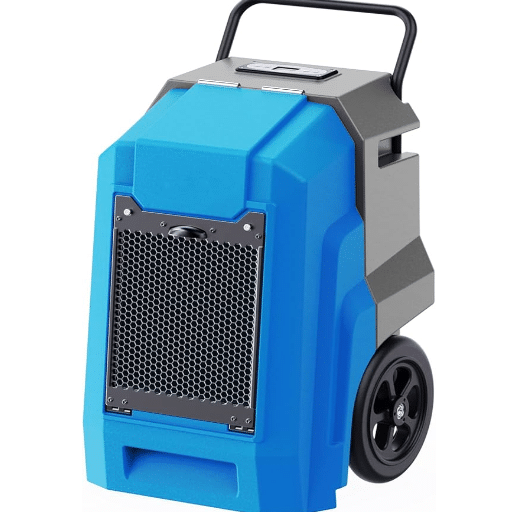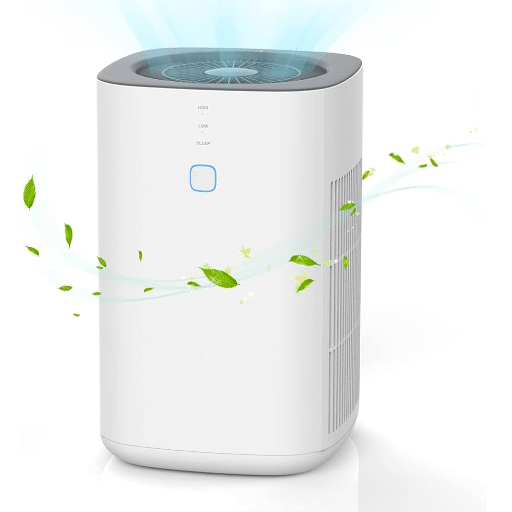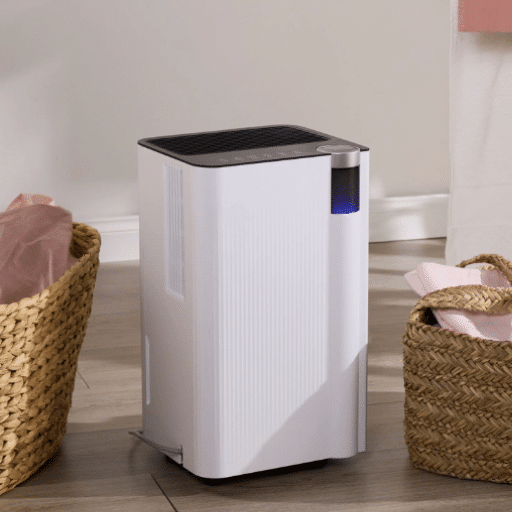Maintaining an ideal humidity level in your home creates comfort, supports good health, and serves as a safeguard for your belongings. Proper installation of the dehumidifier thus becomes paramount in containing the excess moisture, mold formation, and allergens in the air. This comprehensive guide will walk you through all the basic considerations and key strategies in properly placing your dehumidifier for maximum effectiveness.
Understanding Humidity Levels
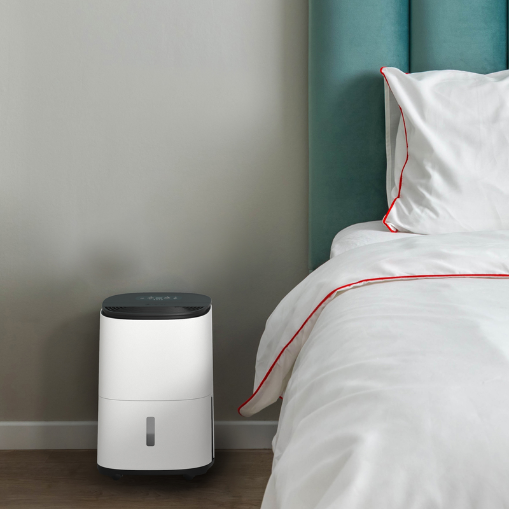
Humidity indicates the presence of moisture in the atmosphere. Understanding and managing these levels is crucial for creating a comfortable and healthy living environment.
⚠️ Important: Levels below 30% can cause dry skin irritations and respiratory irritation, while levels higher than 50% could initiate mold growth and allow dust-mite populations to rise.
The Importance of Managing Humidity
Managing indoor humidity is important for your personal comfort and the long-term protection of your home and health. High humidity levels can:
- Weaken home structure by warping wood and blistering paint
- Facilitate the growth of mold and mildew
- Increase dust mite populations
- Worsen respiratory conditions like asthma and allergies
Conversely, low humidity can lead to:
- Cracking wood furniture and flooring
- Dry skin and sinus problems
- Increased static electricity
- Weakened respiratory defenses
How Relative Humidity Affects Air Quality
Relative humidity has a direct bearing on indoor air quality because it influences pollutant concentration while determining comfort levels. High humidity creates moist conditions that encourage allergen growth, while low humidity allows airborne irritants to prevail more easily.
Identifying Excess Humidity in Your Home
Recognizing the signs of excess humidity is the first step in addressing moisture problems. Here are the key indicators to watch for:
| Visual Signs | Physical Signs | Structural Signs |
|---|---|---|
| • Condensation on windows • Visible mold on walls/ceiling • Water stains |
• Musty odors • Sticky feeling in air • Increased allergens |
• Paint peeling • Wood warping • Metal corrosion |
💡 Pro Tip: Purchase a hygrometer to measure moisture levels indoors and detect if excess humidity is the culprit. Most authorities consider a relative humidity range of 30% to 50% to be ideal.
Best Places to Put a Dehumidifier
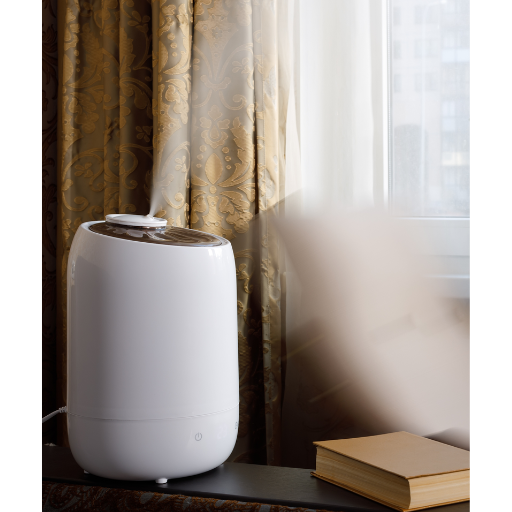
Selecting the right location will maximize your dehumidifier’s efficiency for removing excessive moisture. Here are the optimal placement locations:
🏠 Basement
Being cooler and less ventilated, basements tend to get damp. Placing the dehumidifier here restricts mold activity and eliminates musty smells.
🛁 Bathroom
These rooms get significant moisture from showers and baths. A dehumidifier prevents mildew buildup and improves air quality.
🧺 Laundry Room
Washing machines and dryers create humid conditions. A dehumidifier removes excess moisture and prevents odors.
🍳 Kitchen
Cooking and dishwashing release steam. Proper dehumidification prevents condensation damage to wooden cabinets.
🛏️ Bedroom/Living Room
During humid seasons, placement in frequently used rooms significantly improves comfort and air quality.
🔧 Problem Areas
Rooms prone to water leaks, condensation, or poor ventilation like attics, crawl spaces, or storage rooms.
Optimal Locations for Dehumidifier Placement
The key to effective dehumidifier placement is targeting humidity hotspots. Consider these strategic locations:
Benefits of Placing a Dehumidifier in the Basement
Basement placement offers several advantages:
- Greatly improves indoor air quality
- Prevents structural damage from moisture
- Reduces mold, mildew, and odor formation
- Protects stored items from humidity damage
- Creates opportunity for functional basement space
Other Effective Areas to Use a Dehumidifier
Beyond basements, these areas benefit significantly from dehumidification:
- Bathrooms: Combat moisture from daily use
- Kitchens: Handle steam from cooking activities
- Laundry rooms: Address moisture from washing and drying
- Garages: Protect tools and equipment
- Storage rooms: Preserve documents and belongings
Factors to Consider When Placing a Dehumidifier
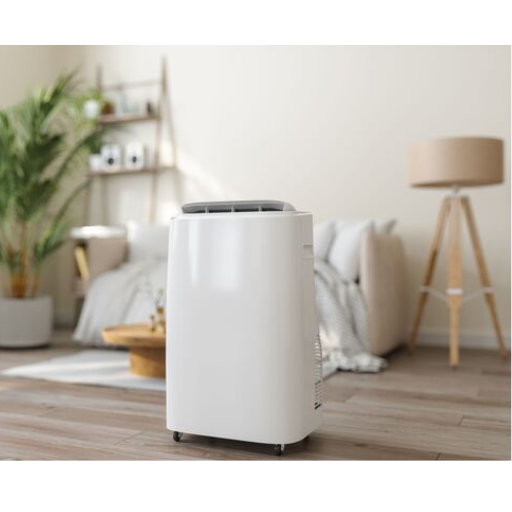
Several critical factors determine optimal dehumidifier placement and performance:
| Factor | Considerations | Impact on Performance |
|---|---|---|
| Room Size & Humidity | Match capacity to room size and moisture levels | Determines effectiveness of moisture removal |
| Moisture Sources | Place near bathrooms, laundry, or basements | Directly addresses problem areas |
| Ventilation & Airflow | Ensure adequate space around unit | Affects air circulation and efficiency |
| Drainage Access | Consider proximity to drains or sinks | Influences maintenance convenience |
| Temperature Range | Operate within manufacturer specifications | Affects unit performance and longevity |
Room Size and Airflow Considerations
Capacity is often given in pints of moisture removed per day and should be matched to room size:
- Small rooms (up to 1,500 sq ft): 30-pint capacity
- Medium rooms (1,500-2,500 sq ft): 50-pint capacity
- Large spaces or high moisture areas: 70+ pint capacity
Accessibility for Maintenance and Drainage
Easy access is essential for:
- Regular filter cleaning and maintenance
- Convenient water tank emptying
- Continuous drainage setup
- Routine performance monitoring
Noise Levels and Comfort in Living Spaces
Modern dehumidifiers feature noise specifications in decibels (dB):
- Whisper-quiet models: 40-50 dB range
- Sound-damping technology: Reduces operational noise
- Variable fan settings: Adjustable for different environments
💡 Tips for Running a Dehumidifier Effectively
1Choose the Right Size: Match your dehumidifier capacity to your space. A 30-pint model suits rooms up to 1,500 square feet, while 50-70 pint models work better for larger or extra-moist areas.
2Proper Placement: Keep it centrally located with ample air circulation. Avoid placing against walls or furniture that could obstruct airflow.
3Set Ideal Humidity: Target 30-50% humidity for optimal indoor comfort. Most units can automatically maintain your set level.
4Clean Regularly: Clean filters every two weeks to maintain efficiency and air quality.
5Manage Water Removal: Empty tanks regularly or set up continuous drainage to a floor drain or sink.
Adjusting Settings for Maximum Efficiency
Proper settings optimization significantly impacts your dehumidifier’s performance:
- Humidity Level: Maintain 30-50% relative humidity
- Timer Settings: Schedule operation during peak humidity times (early morning/evening)
- Fan Speed: Adjust according to room size – high for large areas, lower for energy savings
- Seasonal Adjustments: Monitor and readjust based on changing conditions
Maintaining Optimal Air Quality with Your Dehumidifier
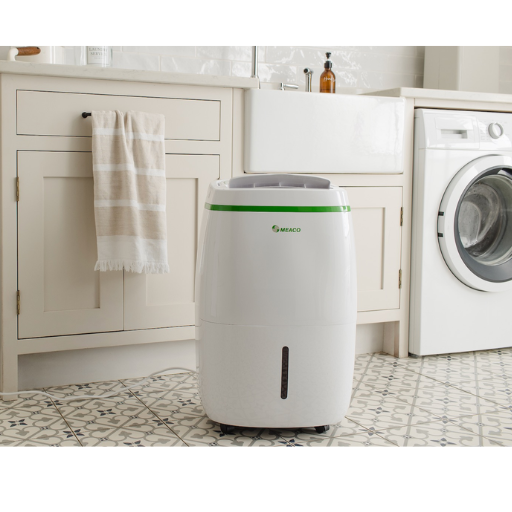
Your dehumidifier works best as part of a comprehensive air quality strategy:
- Prevent mold growth and dust mite proliferation
- Reduce structural damage to your home
- Work alongside air purifiers for enhanced results
- Maintain proper ventilation throughout your home
- Regular cleaning and maintenance schedules
Common Mistakes in Dehumidifier Use
Placing the unit too close to walls or furniture hinders air circulation. Maintain at least 6-12 inches of clearance around the unit for optimal performance.
Forgetting to clean filters and empty water reservoirs reduces efficiency and can cause operational issues. Dirty filters release dust into the air while full tanks trigger auto-shutdown.
Setting humidity levels too low (below 30%) or too high (above 50%) creates discomfort or encourages mold growth. The optimal range is 30-50%.
Operating with all doors and windows shut limits effectiveness. Good ventilation works with your dehumidifier to maintain balanced moisture levels.
References
-
Airplus Dehumidifier User Manual – A guide discussing optimal placement for dehumidifiers, emphasizing central room positioning for airflow.
-
Home Moisture Guide – Tennessee Department of Health – Recommendations for dehumidifier placement, including central room positioning and sealing off outside air.
-
Installing Dehumidifier in Crawl Space – Nebraska Government – Advice on positioning dehumidifiers in crawl spaces for optimal airflow and efficiency.
Frequently Asked Questions (FAQ)
Where to Place a Dehumidifier for Best Results?
If you want to get the maximum out of your dehumidifier, you need to install it in a place that would allow the unit to take extra moisture out of the air. They basically use in moist basements or bathrooms, or any place that has an above-average humidity level. In order for the dehumidification process to be efficient, it is important that air can circulate well past the unit.
What is the Best Place to Put a Dehumidifier in My Home?
Depending on where the most humidity is, that’s where the dehumidifier should be placed. Often, basements and crawl spaces are spots with higher moisture concentrations. You can also dehumidify the air by placing the unit in the hallway so the dry air can be circulated through all parts of your home.
How Does a Dehumidifier Work to Control Humidity?
Humid air is drawn in by dehumidifiers, cooled to condense water vapor, and then they release the softened air into the room. This keeps moisture levels low and can prevent mold and mildew from germinating, thus helping to ensure a safe environment for your family.
Can I Put a Dehumidifier in the Bedroom?
If you observe moisture buildup or a musty smell, then placing a dehumidifier in your bedroom will help reduce humidity levels. Keep the unit away from the walls and furniture to allow an appropriate airflow around the device for better efficiency.
Why Should I Use a Dehumidifier in the Bathroom?
A bathroom is one of the common areas with excessive humidity caused by hot showers and baths. Placing the dehumidifier here will help curb moisture in the air, reduce condensation on mirrors, and inhibit mold growth, thus giving way to a healthier environment.
What do You Do Running a Dehumidifier Against Humidity in Your House?
Running a dehumidifier greatly reduces humidity levels in your house, making it more comfortable and less prone to being damp. It can help prevent the growth of mold and mildew especially to the basement and kitchen where the level of moisture can be higher.
How to Choose Where to Keep Your Dehumidifier?
They should decide where to place their dehumidifier by inspecting the drier places of their home. Usually, basements, bathrooms, and laundry rooms are good choices. Have proper air circulation, and any furniture or walls do not block the unit.
What Are the Benefits of Placing the Dehumidifier Near a Drain?
Suppose you place a dehumidifier adjacent to a drain. In that case, it can set up for continuous drainage, making it easy to handle all the excess moisture without having to empty a water tank regularly. This will generally prove most beneficial in areas with high humidity since it allows the dehumidifier to operate uninterrupted and in the most efficient way possible.
How Will I Get the Best Place for a Dehumidifier with Dry Air?
Considering the size of your space and the humidity level shall give you optimum placement for dry air. With basically poor ventilation, place the unit at the floor level away from walls and furniture guaranteeing good air flow to dry air movement and moisture removal.

